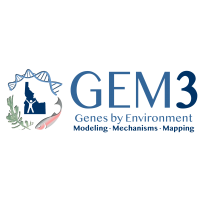Context
The amount and composition of phytochemicals in forage plants influences habitat quality for wild herbivores. However, evaluating forage quality at fine resolutions across broad spatial extents (i.e., foodscapes) is challenging. Unmanned aerial systems (UAS) provide an avenue for bridging this gap in spatial scale.
Objectives
We evaluated the potential for UAS technology to accurately predict nutritional quality of sagebrush (Artemisia spp.) across landscapes. We mapped seasonal forage quality across two sites in Idaho, USA, with different mixtures of species but similar structural morphotypes of sagebrush.
Methods
We classified the sagebrush at both study sites using structural features of shrubs with object-based image analysis and machine learning and linked this classification to field measurements of phytochemicals to interpolate a foodscape for each phytochemical with regression kriging. We compared fine-scale landscape patterns of phytochemicals between sites and seasons.
Results
Classification accuracy for morphotypes was high at both study sites (81–87%). Forage quality was highly variable both within and among sagebrush morphotypes. Coumarins were the most accurately mapped (r2 = 0.57–0.81), whereas monoterpenes were the most variable and least explained. Patches with higher crude protein were larger and more connected in summer than in winter.
Conclusions
UAS allowed for a rapid collection of imagery for mapping foodscapes based on the phytochemical composition of sagebrush at fine scales but relatively broad extents. However, results suggest that a more advanced sensor (e.g., hyperspectral camera) is needed to map mixed species of sagebrush or to directly measure forage quality.
Data and Resources
| Field | Value |
|---|---|
| Modified | 2022-10-06 |
| Release Date | 2021-04-16 |
| Publisher | |
| Identifier | 0431c568-6fee-4a5e-b6ca-94441082e29f |
| License | notspecified |
| Public Access Level | Public |

